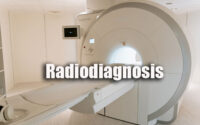Medical Oncology MCQ
Medical Oncology MCQ paper for the written examination is given below. Candidates who are looking for Medical Oncology exam MCQ paper can find in this section. The applied candidates who are getting prepared for the Medical Oncology can view this page for the Medical Oncology Last Ten Years MCQ Papers. Download the Medical Oncology MCQ & Solutions & make it as a reference for your exam preparation.

Take advantage of these Medical Oncology MCQ Papers in a proper manner to get qualifying Marks. Last 5 years Medical Oncology MCQ Papers provided here. Candidates who are applied for the above exam can check and download the Medical Oncology MCQ Papers from here.
MCQs on Medical Oncology
1. Which of the following is CORRECT regarding hemorrhagic cystitis ”?
(1) Bladder protection with mesna is required for all patients receiving cyclophosphamide
(2) Hemorrhagic cystitis is caused by indirect damage to the bladder wall by either cyclophosphamide or ifosfamide
(3) Mesna works by providing a free sulfhydryl group that binds to toxic metabolites
(4) Mesna should be given in divided doses to total 100% of the total alkylating agent dose
2. Which of the following statement is CORRECT regarding anthracycline cardiotoxicity?
(1) Acute doxorubicin cardiotoxicity is irreversible, and its incidence can be reduced by increasing infusion rates.
(2) Chronic and delayed anthracycline cardiotoxicity is more common and severe because it is irreversible.
(3) The incidence of cardiomyopathy secondary to anthracyclines is only related to the cumulative dose.
(4) Available evidence suggests the superiority of ($-blocker use to prevent anthracycline Cardiotoxicity
3. Which of the following is a principle of epigenetic therapy?
(1) Epigenetic changes cause alterations in the sequencing of targeted genes.
(2) Epigenetic therapy is mostly utilized and has the greatest efficacy in solid tumors.
(3) The impact of epigenetic therapy is not seen immediately due to efficacy being based on cellular reprogramming.
(4) Combination therapy with HDAC inhibitors and demethylating agents should not be pursued due overlapping toxicities
4. Asparaginase is commonly used in combination with methotrexate as part of acute lymphoblastic leukemia treatment protocols. Which of the following statement regarding administration of these drugs is TRUE?
(1) Asparaginase should be given concurrently with methotrexate in order to inhibit methotrexate’s clearance and increase its cytotoxicity.
(2) Asparaginase should be given immediately before methotrexate in order to decrease the risk of methotrexate neurotoxicity.
(3) Asparaginase should be given 12 hours before methotrexate in order to prime cancer cells for methotrexate’s antimetabolite activity.
(4) Asparaginase and methotrexate should be given sequentially at least 24 hours apart secondary to methotrexate antagonism
5. Which of the following statements regarding anti-angiogenesis agents is CORRECT?
(1) Lenalidomide was the first angiogenesis inhibitor approved by the FDA for cancer treatment.
(2) Vorinostat, celecoxib, and bortezomib may all be referred to as exclusive angiogenesis inhibitors.
(3) Proangiogenic factors include endostatin, angiostatin, and thrombospondin.
(4) Resistance to vascular endothelial growth factor inhibitors has been seen secondary to increased expression of proangiogenic factors
6. Which of the following types of immunity is most responsible for the host response to tumor development?
(1) Humoral immunity
(2) B-cell-mediated immunity
(3) T-cell-mediated immunity
(4) Antibody-mediated immunity
7. Which of the following is an approach to cancer immunotherapy?
(1) Passive transfer of activated immune cells with antitumor activity
(2) Active immunization to enhance antitumor reactions
(3) Nonspecific stunulation of immune reactions
(4) All of the above
8. Which of the following is an example of an immunotherapy that works by nonspecific stimulation of immune reactions, and in which disease has it shown to be effective?
(1) Cancer vaccine in hepatocellular carcinoma
(2) Adoptive immunotherapy in lung cancer
(3) IL-2 in melanoma
(4) Anti-CTLA4 in pancreatic cancer
9. The purpose of checkpoint molecules such as CTLA-4 and PD-I are to:
(1) Enhance the immune response against infectious agents by activating T cells.
(2) Enhance the immune response against cancer by activating T cells.
(3) Protect normal tissues against autoimmunity by inhibiting T cells.
(4) Protect normal tissues from tumorigenesis by stimulating the Immune system
10. Which is TRUE regarding cancer vaccines?
(1) Cancer vaccines have a high rate of efficacy but their use is limited due to toxicity
(2) Cancer vaccines have a high rate of efficacy and are currently used in multiple tumor types to induce tumor regression.
(3) Cancer vaccines have a low rate of efficacy because of their inability to generate antitumor T cells
(4) Cancer vaccines have a low rate of efficacy despite their ability to generate antitumor T Cells
11. Which of the following is CORRECT regarding adoptive cell therapy?
(1) Adoptive cell therapy is only effective if the lymphocytes are 7 genetically modified prior to infusing them into the patient.
(2) Both non-viral- and viral-based gene delivery platforms have been used to genetically modify cells for use in adoptive cell therapy
(3) Targeting antigens that are expressed only on tumor cells and not on normal tissue can decrease the toxicity associated with on-target, off-tumor effects of the lymphocytes
(4) (2) and (3) only
12. Which of the following drug acts on a targeted mutation?
(1) Docetaxel
(2) Navelbine
(3) Erlotinib
(4) Pemetrexed
13. Which of the following drug is an antimetabolite chemotherapeutic agent?
(1) Gemcitabine
(2) Temozolomide
(3) Mitoxantrone
(4) Bevacizumab
14. Which of the following play essential role in activating apoptosis?
(1) Bel-2
(2) NF-kB
(3) Caspases
(4) Bcl-xL
15. According to RECIST criteria 1.1, a partial response is defined as:
(1) At least a 30% reduction in measurable tumor mass.
(2) At least a 10% reduction in measurable tumor mass.
(3) Improvement in quality of life.
(4) Improvement in survival
16. Anticancer activity of bortezomib is due to the inhibition of:
(1) Proteasome
(2) Bel-2.
(3) Thymidylate synthase.
(4) DM2
17. Dose-dense chemotherapy was developed after the observation that:
(1) The growth of cells is significantly lower in the early part of the growth curve.
(2) The log cell kill is higher in smaller volume tumors, resulting in more rapid growth between chemotherapy cycles.
(3) Growth between chemotherapy cycles is halted.
(4) More frequent administration of chemotherapy led to less toxicity.
18. Which of the following ts TRUE concerning p53?
(1) It is a targetable mutation for therapy
(2) It is a potent inducer of apoptosis.
(3) It causes S-phase arrest in the cell cycle.
(4) It can decrease the activity of cytotoxic chemotherapy
19. Which of the following is a non-measurable lesion, according to RECIST criteria?
(1) 3.5 cm x 2.0 cm pancreatic adenocarcinoma
(2) 1.7 cm x 1.5 cm invasive ductal carcinoma of the breast
(3) 0.8 cm x 0.7 cm right paratracheal lymph node
(4) 5.5 cm x 4.0 cm rectal adenocarcinoma
20. Which of the following is TRUE regarding the use of time to progression as an end point in clinical trials?
(1) Uses a smaller sample size when compared with using overall survival as an end point.
(2) Not confounded by subsequent therapies.
(3) The study can be completed in a shorter amount of time.
(4) All of the above
| Practice Set | MCQs |
| Quiz | Questions and Answers |
21. Which of the following is TRUE concerning a clinical trial?
(1) The sample size of a clinical trial is fixed and determined before the trial begins.
(2) Clinical trials are prospectively planned experiments involving only animals.
(3) Using tumor registry data to compare the survival rates of prostate cancer patients treated with surgery to those of patients who received radiotherapy is an example of clinical trial.
(4) Clinical trials test a clearly stated hypothesis using a predefined analysis plan
22. Phase I trials of cytotoxic agents are designed to determine a dose that is appropriate for use in phase II trials. Which of the following statements is TRUE about phase-l trials?
(1) Phase I trials involve the first use of a drug, device, or procedure in humans in a new disease setting Or a new’ combination’ of therapies.
(2) Patients for phase I trials are usually not chosen on the basis of their likelihood of having a favorable response to the experimental treatment.
(3) Phase I trials do not require statistical justification because the sample sizes are usually small.
(4) (1) and (2)
23. A drug, device, or other treatment may be considered for phase II testing when:
(1) The maximum tolerable dose is known but there is genuine doubt about efficacy and patients with the condition of interest and a likely favourable outcome can be recruited as study participants.
(2) A standard treatment exists for comparison.
(3) Accrual is rapid enough to allow recruitment of 20 to 30 patients.
(4) An appropriate control group can be recruited at the same time as the experimental group
24. Which of the following best describes Simon phase 2.5 design on molecularly targeted drugs and cancer therapeutic vaccines?
(1) The design compares progression- free survival times of the same patient from the current trial with his/her previous trial.
(2) The design first treats all eligible patients with two to four courses of the experimental drugs. Patients are then evaluated, and the experimental drug is either continued or discontinued, depending on their response to the initial treatment.
(3) The design is similar to a phase III trial except that it allows a relatively large type I (false positive) error and aims to identify a relatively large difference, thus requiring fewer patients.
(4) The design will compare time to progression of patients in the study with a prospectively identified and prognostically comparable historical control
25. Which of the following is TRUE of phase III trials?
(1) The primary end points should be demonstrably related to patient benefit such as tumor shrinkage.
(2) Eligibility criteria) should be limited to a group of patients with certain conditions.
(3) Conditions of treatment should be suited to community patient care.
(4) A quality-of-life measure should be included to measure benefit to patients :
26. Which of the following statements about the epidermal growth factor receptor (EGFR) in head and neck SCC (HNSCC) is TRUE?
(1) Randomized trials demonstrated that oral tyrosine kinase inhibitors (TKI) of EGFR such as erlotinib and monoclonal antibody inhibitors of EGFR such as cetuximab resulted in similar tumor control.
(2) Activating EGFR mutations are frequent in HNSCC.
(3) The EGFR inhibitor cetuximab improved overall survival when added to definitive radiation therapy or to palliative platin based chemotherapy in HNSCC.
(4) High EGFR expression is associated with sensitivity to radiation therapy
27. Which of the following characteristics are typical features of human papilloma virus (HPV)-related HNSCC?
(1) Most patients have limited or no smoking history and most have primary tumors that involve the oropharynx (base of tongue or palatine tonsils).
(2) Survival outcomes are substantially better than in patients with smoking-associated HNSCC.
(3) The role of the HPV in subsites other than the oropharynx is not clear.
(4) All of the above.
28. Which of the following statements is TRUE?
(1) Radical neck dissections should be performed for the management of all locally advanced NSCC.
(2) Complications from neck dissections may include hematoma, seroma, lymphedema, wound infections and dehiscence, carotid artery exposure and rupture, and damage to the VII, X, XI, and XII cranial nerves.
(3) In a surgically treated tumor without radiographic evidence of lymph node metastasis, an elective neck dissection should be performed if the risk of occult metastasis to the neck nodes is greater than 50%.
(4) For patients who have had a neck dissection for HNSCC, there is no benefit from postoperative adjuvant radiation therapy
29. Which of the following statements is TRUE?
(1) The combination of cisplatin and 5FU improves overall survival in comparison to single agent methotrexate in patients with metastatic HNSCC.
(2) Cetuximab has no activity in metastatic or recurrent HNSCC.
(3) The combination of cisplatin and 5FU results in a higher tumor response rate than single agent methotrexate in patients with metastatic HNSCC.
(4) Higher chemotherapy doses improve overall survival
30. Which of the following statements regarding induction chemotherapy in the treatment of HNSCC is TRUE?
(1) Treatment with concurrent chemotherapy and radiation therapy resulted in improved overall survival compared to induction chemotherapy followed by radiation therapy for locally advanced laryngeal SCC.
(2) Addition of docetaxel to cisplatin and SFU was associated with similar overall survival when compared to cisplatin and 5FU in patients with locally advanced HNSCC subsequently treated with radiation therapy alone or concurrent carboplatin and radiation therapy.
(3) Induction chemotherapy may facilitate organ preservation in patients with locally advanced laryngeal or hypopharyngeal SCC.
(4) Induction chemotherapy followed by concurrent cisplatin and radiation therapy results in improved overall survival compared to concurrent cisplatin and radiation therapy.
31. A 40-year-old never-smoker woman was diagnosed with adenocarcinoma of the lung a year ago. Molecular testing of her tumor revealed an exon 19 deletion in EGFR. She was started on erlotinib and had a partial response. However, her most recent scan suggested significant progression in her disease burden with multiple new liver and lungmetastases. Her tumor was rebiopsied. Which of the following alterations is most likely to explain the tumor’s resistance to erlotinib?
(1) L858R
(2) MET amplification
(3) T790M
(4) The biopsy is likely to reveal transdifferentiation to small cell lung cancer (SCLC).
32. Sequencing the lung adenocarcinoma of a 54-year-old man with a 60 pack-year smoking history is likely to reveal which of the following features?
(1) EML4-ALK translocation
(2) Anexcess of C>T transitions
(3) Co-mutation of TP53 and RBI
(4) Anexcess of G>T transversions
33. A 55-year-old man with a 30 pack-year history of smoking, presents to the emergency room with shortness of breath. Chest radiograph demonstrates a right upper lobe opacity. Computed tomography (CT) scan reveals a 3.5-cm spiculated mass in the peripheral right upper lobe, which is suspicious for malignancy, without any hilar or mediastinal lymphadenopathy. What is the next best step in management?
(1) Bronchoscopy and biopsy of the mass
(2) CT-guided biopsy of the mass
(3) Brain MRI
(4) Refer to thoracic surgeon for resection.
34. A 65-year-old man with a 40 pack-year history of smoking, presents to the emergency room with shortness of breath. Chest radiograph demonstrates a left lower lobe mass and left pleural effusion. CT reveals a 3-cm left lower lobe mass, left hilar fullness, and a moderate left pleural effusion. Biopsy of the mass and thoracentesis are both positive for adenocarcinoma. Staging studies do not reveal any distant metastases. Which of the following is the next best step in his management?
(1) Referral to a thoracic surgeon
(2) Radiation to the chest
(3) Concurrent chemotherapy and radiation
(4) Platinum-based doublet therapy
35. A 58-year-old man, with a 40 pack-year history of smoking is referred to you by 7 a radiation oncologist for management of limited-stage SCLC. What treatment would you recommend?
(1) Cisplatin and etoposide chemotherapy
(2) Cisplatin and etoposide chemotherapy with concurrent thoracic radiation
(3) Cisplatin and etoposide chemotherapy, followed by PCI if response to chemotherapy
(4) Cisplatin and etoposide chemotherapy with concurrent thoracic radiation, followed by PCI if response to treatment
36. Which of the following statement is CORRECT regarding the role of adjuvant chemotherapy after resection for NSCLC?
(1) Adjuvant chemotherapy benefits patients with stage JA disease.
(2) Adjuvant chemotherapy benefits patients with node-positive disease.
(3) Adjuvant chemotherapy may benefit patients with stage IB disease, who have primary tumors less than 4 cm in size.
(4) All of the above.
37. Which of the following statements is CORRECT regarding pulmonary carcinoid tumors?
(1) Patients usually present with carcinoid syndrome.
(2) Surgery has a curative potential for resectable localized tumors.
(3) Adjuvant chemotherapy is the standard of care following complete surgical resection.
(4) Most pulmonary carcinoids are atypical carcinoids
38. Which of the following is a characteristic genomic feature of small cell lung cancer?
(1) Recurrent alterations in EGFR and ALK
(2) Recurrent alterations in TP53 and RBI
(3) Recurrent mutations in DDR
(4) Recurrent KRAS mutations.
39. Which of the following immunohistochemistry markers is present in malignant mesotheliomas?
(1) CEA
(2) TTF-1
(3) Moc-31
(4) Calretinin
40. A 60-year-old man was recently diagnosed with metastatic pleural mesothelioma. Assuming that this patient has no other significant comorbidities, which of the following chemotherapy regimens would be most preferable in the first-line setting?
(1) Cisplatin and gemcitabine
(2) Carboplatin and gemcitabine
(3) Single agent pemetrexed
(4) Cisplatin and pemetrexed
41. Which of the following statements regarding thymoma is TRUE?
(1) The incidence of thymoma is higher in women than in men.
(2) Thymoma is most commonly seen in people under 30 years old.
(3) The most common site of metastatic spread for thymoma is bone.
(4) Complete surgical resection is the most important predictor of long-term survival for patients with thymoma.
42. Which of the following molecularly targeted therapies has meaningful clinical activity in advanced thymoma?
(1) Octreotide, a somatostatin analog
(2) Erlotinib, an EGFR inhibitor
(3) Imatinib, a c-kit inhibitor
(4) Sorafenib, a multitargeted kinase inhibitor
43. A 21-year-old man presents with anterior chest pain and cough. Physical examination is unremarkable and his performance status is excellent. Chest radiography shows widening of the superior mediastinum. CT scan shows a 6-cm anterior mediastinal mass encasing the trachea and great vessels and three I-cm pulmonary nodules. CT scan of the abdomen and pelvis and a testicular ultrasound examination are normal. Laboratory studies reveal normal blood counts and blood chemistry, LDH of 880 IU/L (normal, 120 to 240 IU/L), AFP of 1,800 ng/mL (normal, <8 ng/mL), and (β-hCG of 1.2 mlU/mL (normal, <5 mlU/mL). What is the most likely diagnosis?
(1) Hodgkin lymphoma
(2) Benign teratoma
(3) Nonseminomatous germ cell tumor (NSGCT)
(4) Seminoma
44. Which of the following statements is TRUE regarding mediastinal germ cell tumors?
(1) The incidence of malignant mediastinal germ cell tumors is the same in men and women.
(2) Seminoma is the most common mediastinal germ cell tumor.
(3) An elevated serum AFP in a patient with biopsy-proven seminoma indicates the presence of a non-seminomatous component.
(4) Mediastinal NSGCTs are associated with better overall survival than testicular NSGCTs
45. Which of the following is TRUE for mediastinal germ cell tumors according to the International Germ Cell Consensus Classification (IGCCC)?
(1) All pure mediastinal seminomas are good risk
(2) All mediastinal non- seminomatous germ cell tumors are poor risk
(3) Pure mediastinal seminomas with non-pulmonary visceral metastases are poor risk
(4) Mediastinal non-seminomatous germ cell tumors without visceral metastases are intermediate risk



